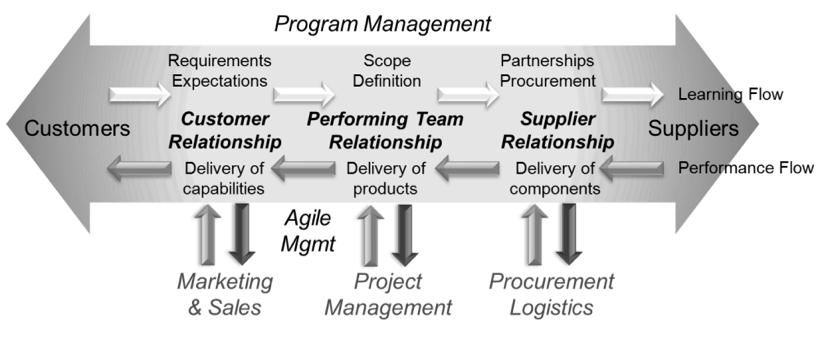Evolving stakeholder management in programs and Agile projects
A generally accepted definition of stakeholders is: individuals or groups that can be positively or negatively affected by the process or its outcomes and have the potential to influence them.
Stakeholder management is often confused with stakeholder analysis. Whereas stakeholder analysis consists mostly of identifying the different stakeholders, their influence and their needs, stakeholder management, or engagement, is the analysis, the influencing and the monitoring of the different stakeholders and their needs, which takes into account the softer side of the management process.
Program level stakeholder management is not just about managing pre-set processes, but about influencing people and building rewarding relationships. Always think of stakeholder management as a two-way street: What do you need from the stakeholders and what will you offer to them that they value?
In the project management world, needs and expectations are considered as two separate issues. Most project management books and manuals define a need as an explicit requirement, whereas typically, expectations are undefined requirements. Agile management, like program management, cannot afford to consider only existing and declared needs, but must also strive to uncover undeclared and potential needs, usually labelled as expectations. Agile management builds on this concept by involving customer in the whole process of decision-making to ensure that not only needs but also expectations are met.
Only a sound stakeholder management process will enable the identification and realisation of significant benefits; those that matter. In Agile management, as well as in program management, the team is seen as a complex adaptive system, in contrast to the traditional ‘command and control’ style favoured by many organisations. Agile teams are built on the principles of self-organisation and self-management; this goes against the traditional project culture of most organisations and requires a culture change. But it enables team to be much more creative and flexible.
In complex situations, traditional project managers should think in terms of fast-tracking, where planning and execution are conducted in parallel and where the plan continually evolves, based on rapid results delivery. Fast-tracking only works when decision-makers are continually involved from the start.
I have experienced firsthand the necessity of involving stakeholders on an ongoing basis in large construction fast-track projects to be successful. When the environment is turbulent and delivery needs to be fast only an ongoing decision process based on value realisation can work.
The figure below shows how a typical stakeholder value chain creates a flow of learning and performance that enables ongoing delivery of benefits and re-evaluation of requirements and expectation, based on the analysis of results. In this program-based diagram, customers define their needs, which are translated by the program team into a clear scope for the projects that are part of the program.
 The Team Value Chain (© Thiry, 2010)
The Team Value Chain (© Thiry, 2010)
Partnerships are created with suppliers to deliver project components and work packages. The project and program team deliver products and services incrementally and capabilities are implemented into the business. Based on the performance of those new capabilities, adjustments are made to the requirements and so on. Agile management applies similar concepts:
“The agile methodology of ‘scrum’, for example is known for its 15-minute daily meetings. Its format contains three questions. Participants state what they did yesterday, what they will to today and what road blocker stands in their way. […] The scrum meeting is not about status. It’s about completion.” (Bill Krebs – PMI 2009-2010)
In team meetings, try to be effective, split meetings into an ‘information’ phase, where the objective is to share information with the whole team, and a ‘decision’ phase, where the goal is to have only the people participating in the decision process. Don’t ramble on in the meeting, if a decision cannot be reached within the self-imposed time limits, set another meeting with only the interested parties.
Collaboration between all the actors in the process is essential to ensure that the program and its component projects will deliver the strategic objectives. In programs, if the strategic objective and expected benefits have not been defined accurately and prioritised the result will not deliver value. In a turbulent environment, Agile management, through its user involvement, ensures that an ongoing stream of working deliverables are produced and well integrated into a whole. In both cases, empowerment is key to fast and informed decision-making, but often complicated control systems get in the way.
Program and Agile Management: Two birds of a feather? series:

